Latest News
Green Jay x Blue Jay Paper
September 10, 2025
In June of 2023, we were stunned to discover a putative hybrid jay in a suburb outside of San Antonio, Texas with the help of landowner and original observer Donna Currey. PI Keitt and doctoral candidate Brian Stokes were able to observe the bird in the field, band it, and collect a small blood sample for genomic analysis. You can read the paper here
 a. Blue Jay by Travis Maher. Cornell Lab of Ornithology - Macaulay Library. b. Hybrid Jay by Brian R. Stokes. c. Green Jay by Dan O’Brien. Cornell Lab of Ornithology - Macaulay Library.
a. Blue Jay by Travis Maher. Cornell Lab of Ornithology - Macaulay Library. b. Hybrid Jay by Brian R. Stokes. c. Green Jay by Dan O’Brien. Cornell Lab of Ornithology - Macaulay Library.
The putative hybrid’s paternity was uncovered using whole-genome sequencing and comparative bioinformatic techniques to confirm this bird to be a F1 hybrid resultant of the mating between a female Green Jay (Cyanocorax yncas) and a male Blue Jay (Cyanocitta cristata). This finding offers rare insight into how climate change and human-altered landscapes are bringing previously isolated species into contact. Green Jays are typically found from South Texas through Central and South America, while Blue Jays dominate eastern and northern forests. Their overlap in South Texas is narrow, and until now no wild hybrids had ever been documented. As warming temperatures and shifting habitats continue, such cross-species encounters may become increasingly common.
While hybridization is commonly observed between bird species, we see this observation as particularly interesting because:
- the parent species are in different genera with the last common ancestor around 7 million years ago,
- these are intelligent, social species and, as such, have more complicated behavioral barriers to mating, which is quite different we assert than, for example, hybridization in bears,
- the original interest in the Green Jay is their rapid, somewhat unprecedented, range expansion from southern to central Texas, so this event represents anthropogenically driven “global weirding” where communities and ecosystems are being reshuffled, and
- many climate-biodiversity impacts have been documented at northern latitudes, whereas our observation highlights the dynamism of sub-tropical environments that are experiencing rapid tropicalization.
Press coverage:
- So What Should We Call This – a Grue Jay?
- First known wild ‘grue jay’ hybrid spotted in Texas
- This unusual hybrid found in Texas is the first of its kind in the wild
- Climate change might be pushing different species together, researchers say upon ‘grue’ jay discovery
- This ‘Grue Jay’ Hybrid Looks Cool as Hell—but It’s a Warning Sign
- ‘Grue jay?’ Homeowner spots first blue jay and green jay hybrid in Texas. See it
- What’s a ‘Grue Jay’? Introducing the new hybrid love child of the Blue and Green Jays
- Encontraron en la naturaleza el primer animal híbrido
- Strange Bird Spotted in a Texas Backyard Is the First Known Hybrid Between a Blue Jay and a Green Jay
- Rare blue-and-green hybrid jay spotted in Texas is offspring of birds whose lineages split 7 million years ago
- Biologists In Texas Just Identified The ‘Grue Jay,’ The First Known Hybrid Of A Blue Jay And A Green Jay
- ‘Grue jay?’ Homeowner spots first blue jay and green jay hybrid in Texas. See it
- Meet Grue Jay: Rare hybrid offspring of a blue jay and a green jay born of climate change
- Meet the ‘grue jay,’ a rare hybrid songbird
- No two jays about it: Researchers discover new ‘Grue Jay’ in South Texas
- A blue jay and a green jay mated, researchers say. Their offspring is a scientific marvel
Ecuador Sensing Workshop
September 03, 2025
Thanks to the generous support of the Teresa Lozano Long Institute of Latin American Studies, we were able to train two Ecuadorian undergraduate students on the deployment and maintainance of our sensing platform. The training took place at Tiputini Biodiversity Station in July, 2025. The award was to graduate student Joy Richardson. Postdoc Nicole Wonderlin also participated.
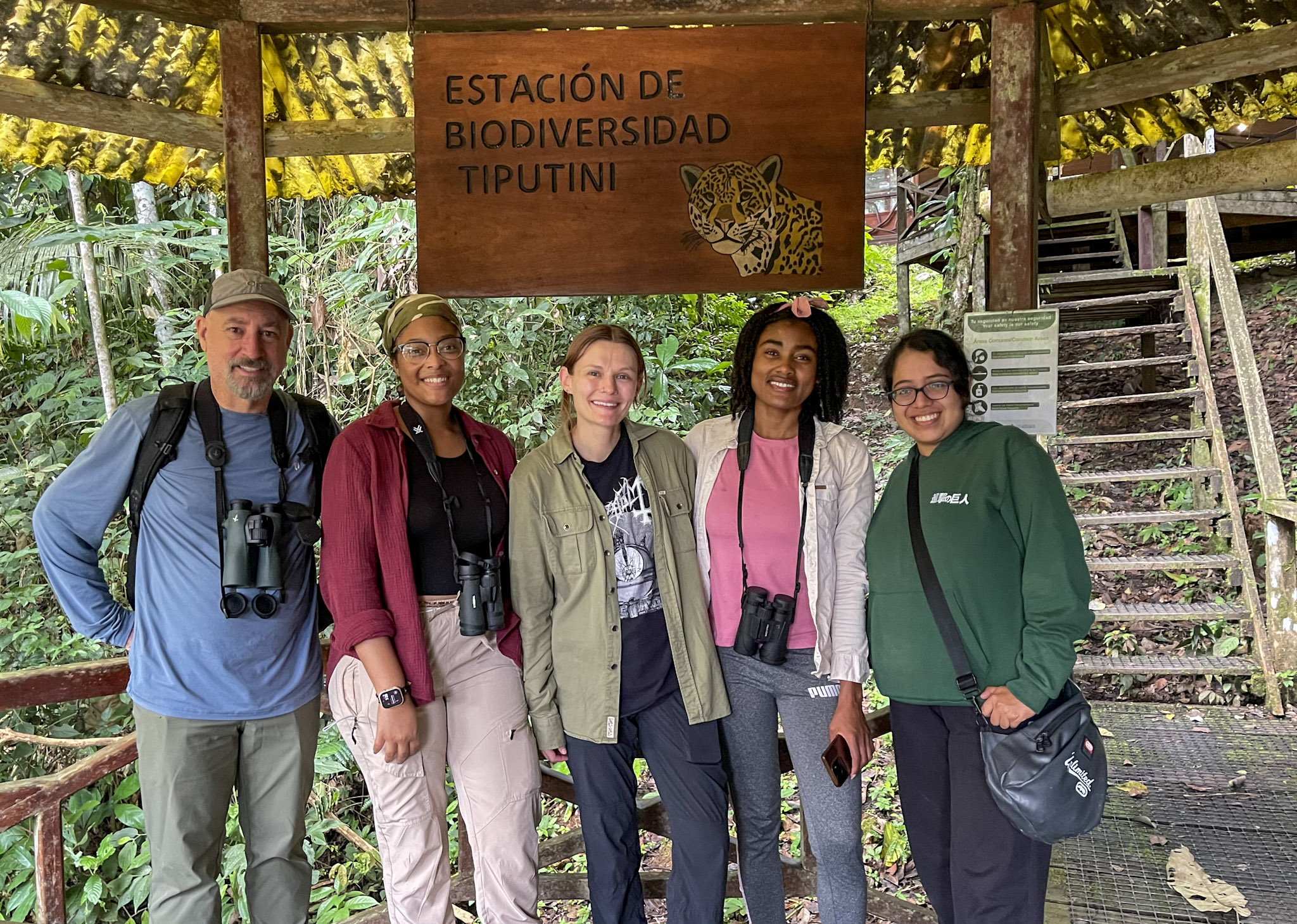
Postdoc Opportunity
August 04, 2025
The 2025 Stengl-Wyer Scholars program is now accepting applicants. Please reach out if you are interested in applying to work with the Keitt Lab or if I can be of any help with your application and identifying sponsors.
WildLabs Variety Hour
July 25, 2025
I will be giving a 5-minute overview of the Biosense platform during the upcoming WildLabs Variety Hour.
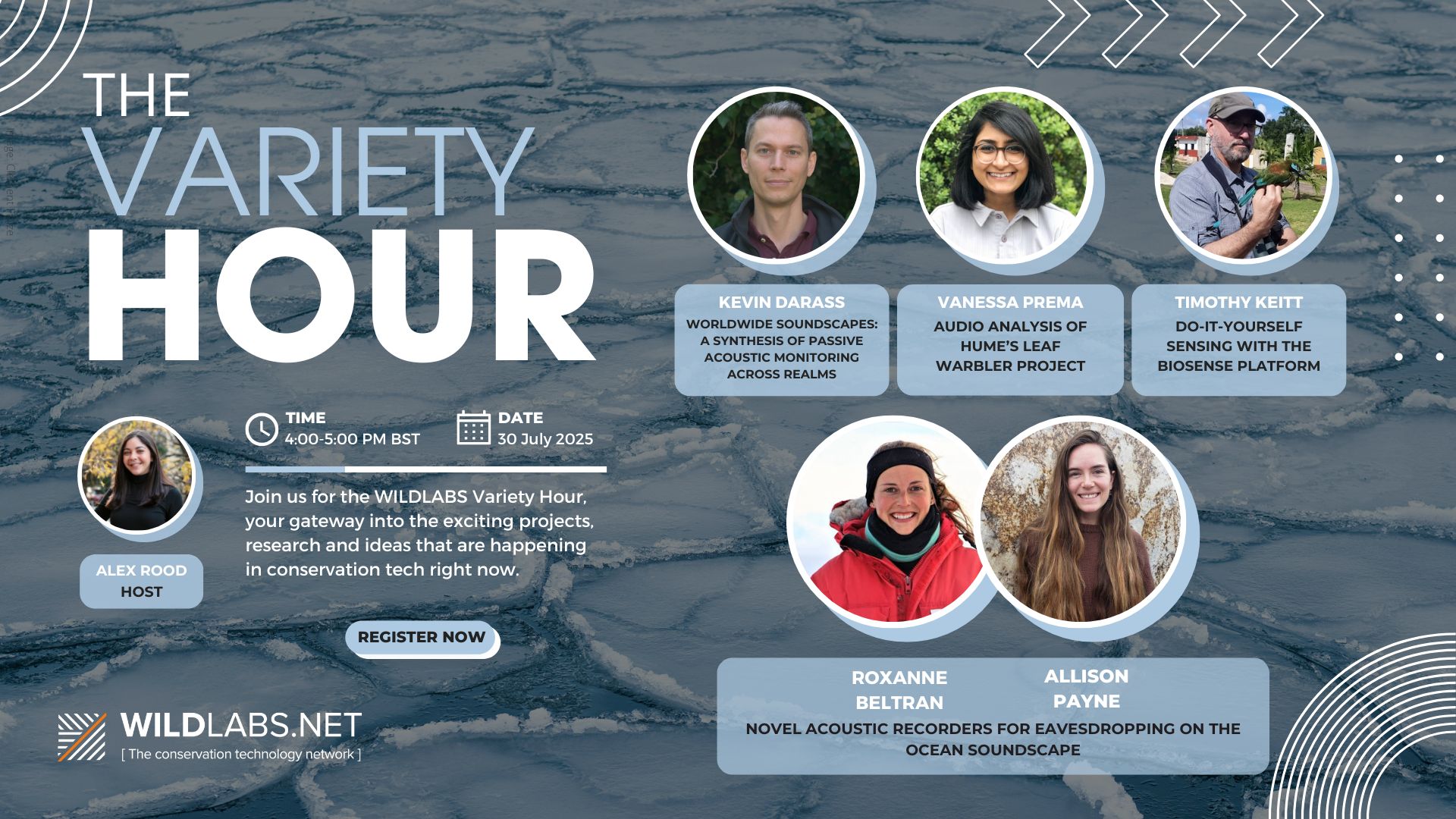
Coastal Bend Bird Monitoring Workshop
June 02, 2025
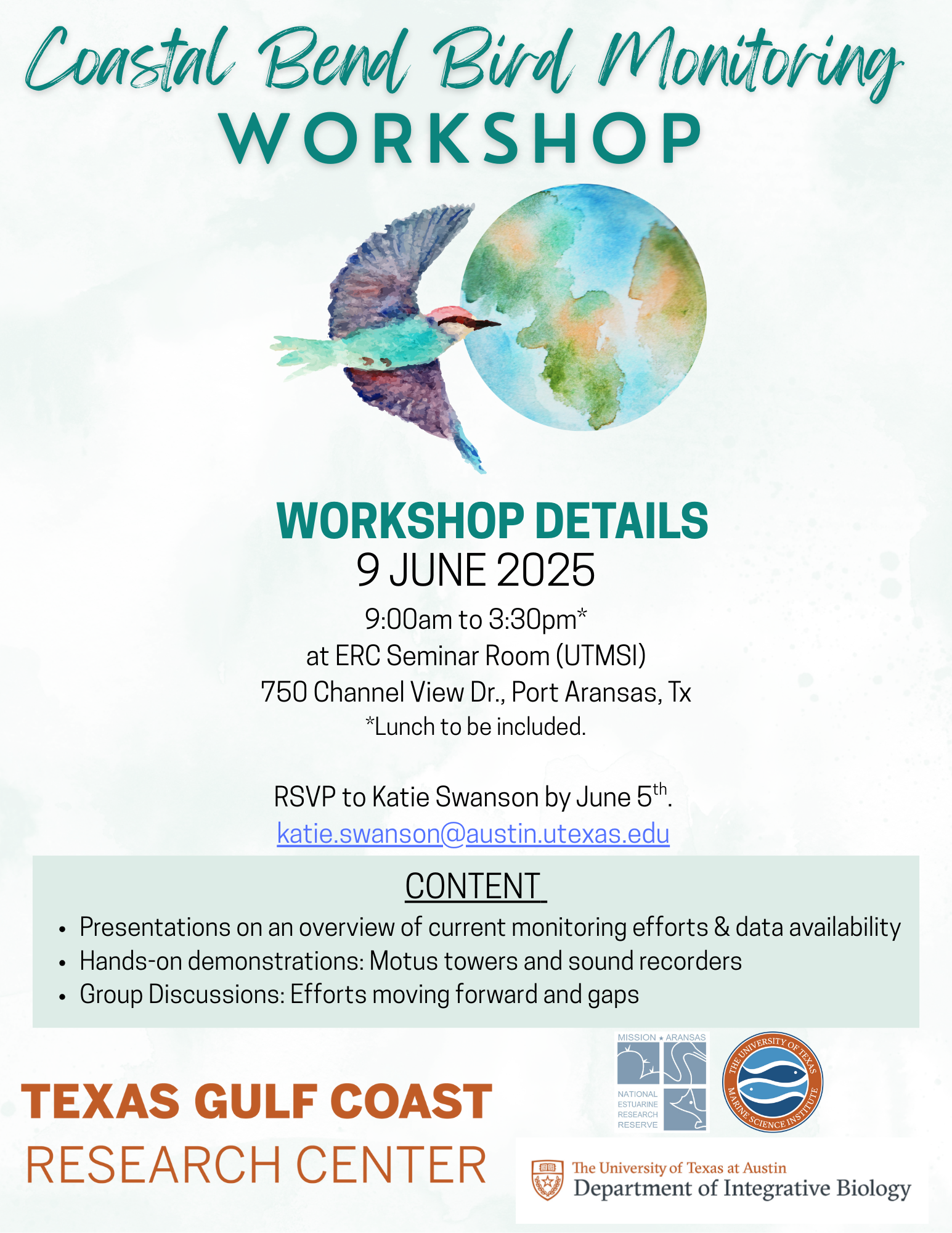
Two Postdoc Positions Available
June 02, 2025
Planet Texas 2050 is currently seeking two innovative, collaborative, and community-engaged Climate and Community Resilience postdoctoral scholars to join our teams in a cluster hire across two research areas: (1) Environmental Social Science, Education, and Communication/Meaning-Making and (2) Environmental Data Science and Spatial Computing. Successful candidates will contribute to groundbreaking research while building their academic careers within a supportive, interdisciplinary, and highly collaborative environment at a top-tier research university. We welcome applicants across a range of disciplines and have particular interest in those who seek to work at the interfaces between disciplines.
Please note that the listings say the position is “expected to continue through May 31, 2026” – year one will actually go until August 31, 2026 and will be renewable for up to one additional year pending funding availability and performance.
(1) Environmental Social Science, Education and Communication/Meaning-Making: Applicant link (Link for UT employees)
(2) Environmental Data Science and Spatial Computing: Applicant link (Link for UT employees)
Please feel free to reach out if you have any questions about the positions and working in the Keitt Lab (these positions will be shared among PI’s and you are encouraged to contact anyone involved in the project).
First MOTUS Detection
April 25, 2025
We had our first MOTUS tower detection at Fennessey Ranch this week! On April 18 a Franklin’s Gull passed by our tower. The previous detection for this gull was at the Estación Biológica Maritza in Costa Rica on November 17, 2024, which is a 2279km journey! Most recently, the gull was detected in South Dakota on April 23.
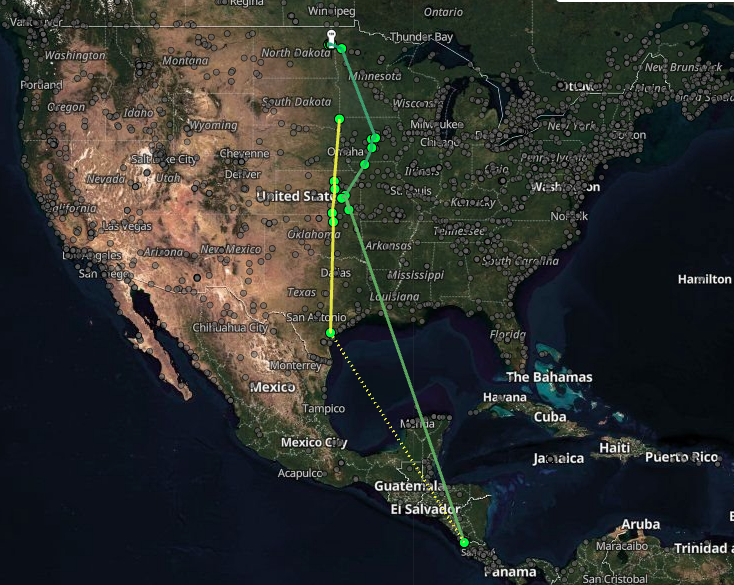
This gull was originally tagged by a group in North Dakota evaluating bird movement around airfields to better understand bird strike risk with aircrafts. The MOTUS wildlife tracking network is made up of many individual participant projects like this one, each deploying tags and receiver stations for their own goals. By centralizing data from all of these projects, the coordinated network expands the scale and impact of each project’s work.
Funding for this Gulf Coast sensing project was provided by the Texas Gulf Coast Research Center.
Guide to urban climate colabs
March 11, 2025
The folks at the City of Austin’s Cimate CoLab have posted this guide to creating your own CoLab in your city.
Motus Tower Installation
March 11, 2025
We installed two Motus towers at our UTMSI/Fennessey Ranch field station last week. The Motus network tracks the movements of migratory birds. Radio receiver towers can detect transmitter tags attached to birds from as far as 20km away. As the number of birds carrying tags and the number of towers increase over time, the greater resolution we will have on the routes long-distance migratory birds use. This is especially important in identifying key stop-over locations where birds refuel before contining migration. These are the first MOTUS equipment installed as part of UT that we are aware of.


Funding was provided by the Texas Gulf Coast Research Center.
BioSense software
February 13, 2025
I have made my BioSense repository public on github. The BioSense software runs sdm inside of a docker and generates raspberry pi os images that can be burned to media and used to boot a raspberry pi. These images can be fully configured to connect to a wireguard vpn and begin recordding data. Services are provided to record sound, interogate a GPS, record environmental data off of a BME 280 sensor, manage a UPS (power up and down as needed), run BirdNet, and log soil moisture data. We currently have BioSense running on 8 devices in the field.
If you think BioSense could be useful for your project, please contact me. We are happy to collaborate and consult on projects. Note that I am rewriting BioSense at the moment, so a future version will have a cleaner and more automated design. Nonetheless, BioSense represents a considerable amount of development on my part and I hope will be useful to others and stimulate collaborations.
Spatial Sorting Manuscript
January 22, 2025
Super-student Nikunj Goel (now a postdoc with Mevin Hooten) has posted a preprint to bioR$\chi$iv. Nikunj has extended the theory of natural selection to include spatial sorting, a process in which dispersal-linked genes are disproportionately represented in newly colonized regions. The cool thing is that he developed the theory and used that to figure out what to measure. He found folks that had relevant data and closed the loop. A really impressive bit of theory-data integration. Check it out here.
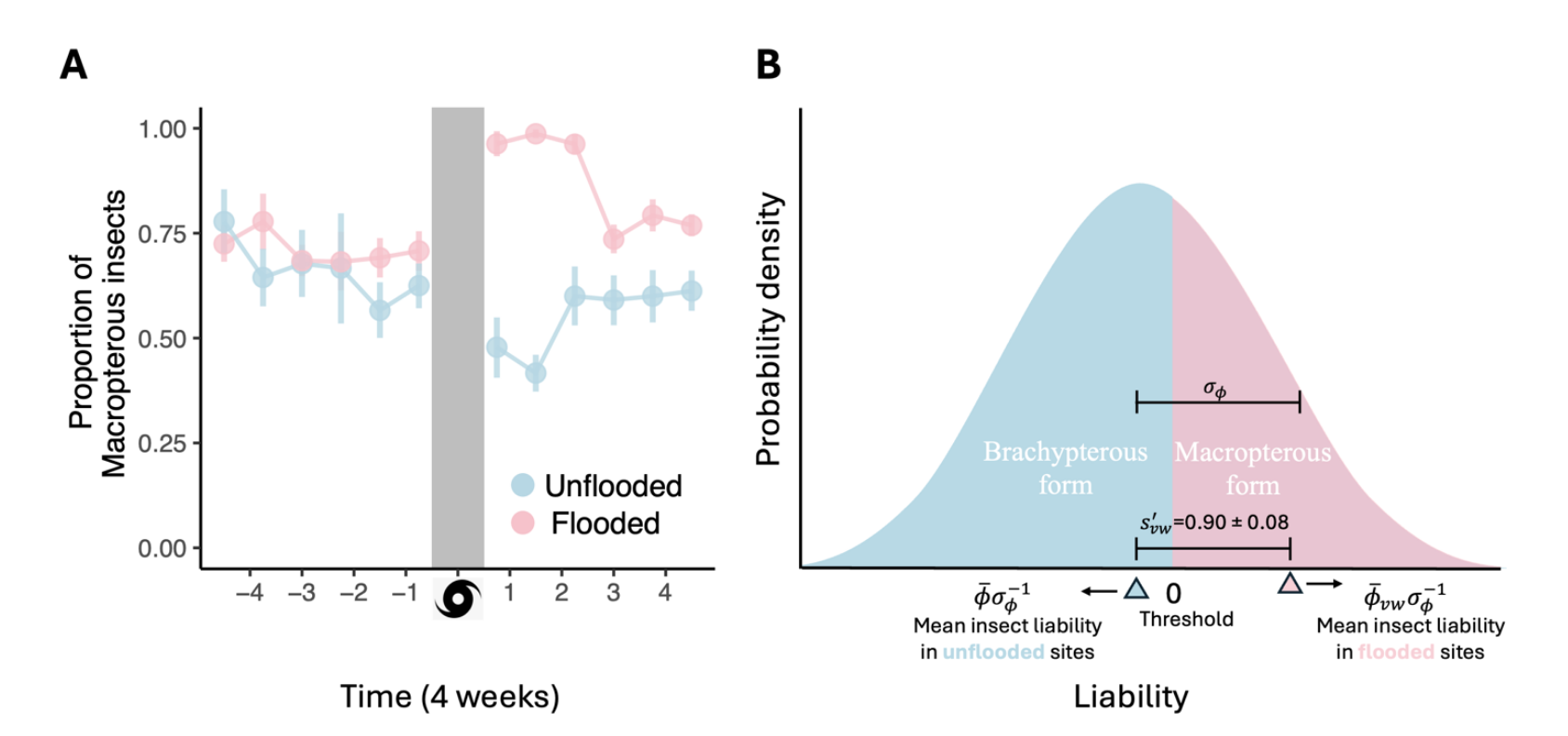
New R Package
January 08, 2025
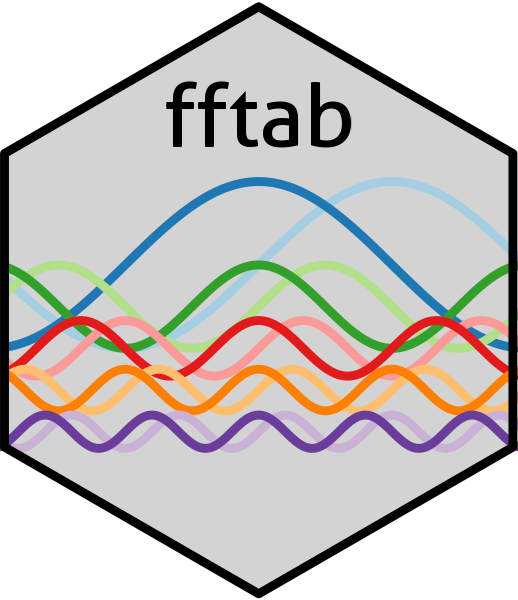

Every time I need to use Fourier transforms in R, I have to relearn the layout and the relationship between the order of coefficients and their associated frequencies.
I decided to make things easier for myself by wrapping the Fourier coefficients, along with their frequencies, in a tibble for easy manipulation.
The result is the fftab package. You can also find it on CRAN.
Visit to University of Florida
January 02, 2025
Thanks to funding from the Southeastern Conference (Who said football was not good for something?),
I had an ejoyable visit to the University of Florida in October 2024 hosted by my former postdoc advisor
Bob Holt.
The timing was excellent as I got to see my pal, Ottar N. Bjørnstad, who was a postdoc at NCEAS and happened to in town, and former UT colleague Matthew Leibold.
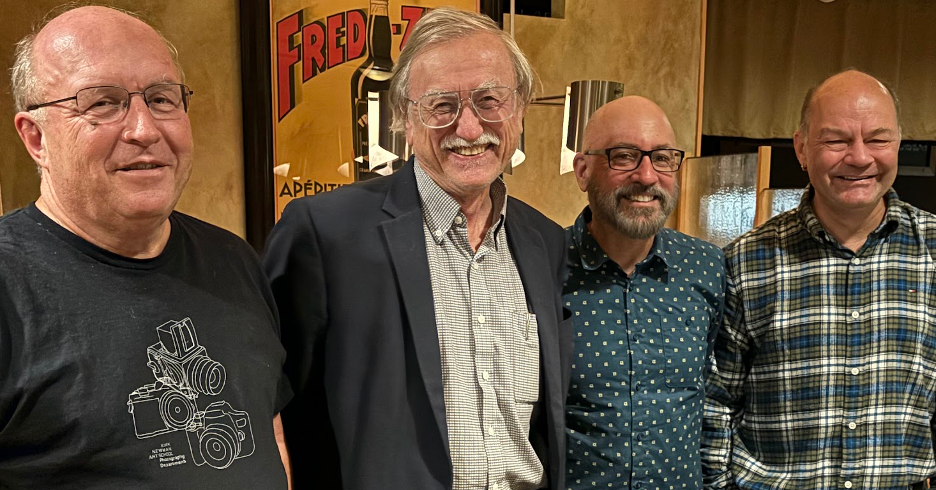
New Year, New Website
January 01, 2025
I have been wanting to move to GitHub Pages and Jekyll for awhile. Now that the college is shutting down
its site service, I finally got around to building the new site. I made two tries at using an existing
Jekyll template called Academic Pages. It was quite helpful, yet it is designed for a single investigator,
not a lab group. Once you start modifying the site extensively, the theme becomes more of a hassle than
an asset. So I started fully from scratch an built my own pages, collections, and style sheets. It is not
too bad once you get the hang of it. See if you can find the embedded pun.
Happy New Year!